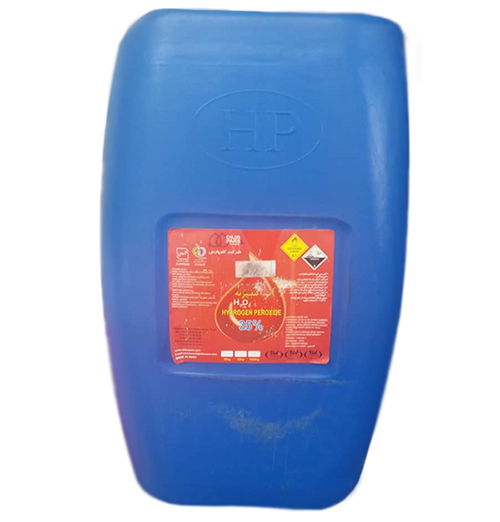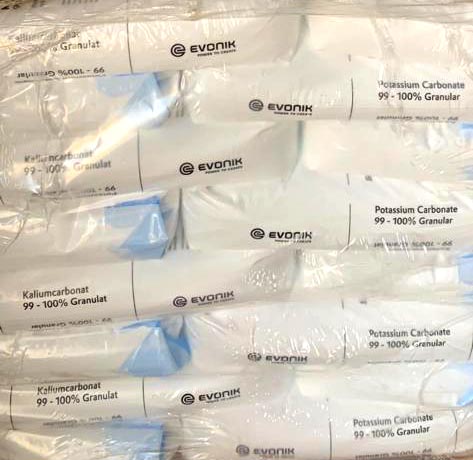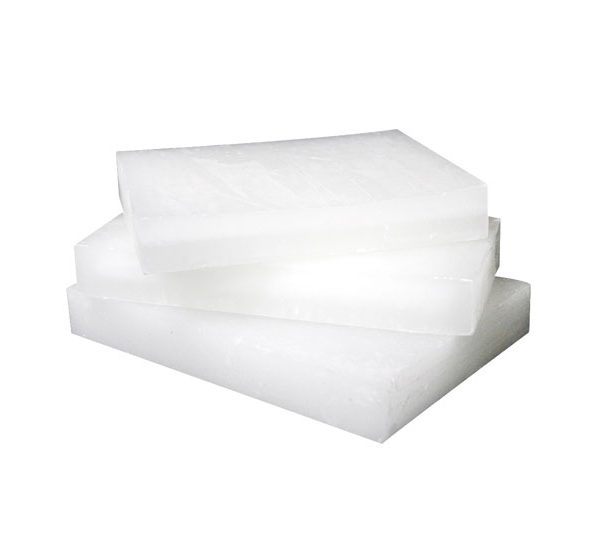Organic chemistry
Calcium hypochlorite is a general oxidizing agent and therefore finds some use in organic chemistry. For instance the compound is used to cleave glycols, α-hydroxy carboxylic acids and keto acids to yield fragmented aldehydes or carboxylic acids. Calcium hypochlorite can also be used in the haloform reaction to manufacture chloroform. Calcium hypochlorite can be used to oxidize thiol and sulfide byproducts in organic synthesis and thereby reduce their odour and make them safe to dispose of.
Production
Calcium hypochlorite is produced industrially by treating lime (Ca(OH)2) with chlorine gas. The reaction can be conducted in stages to give various compositions, each with different concentration of calcium hypochlorite, together with unconverted lime and calcium chloride. The full conversion is shown[1]
- 2 Cl
2 + 2 Ca(OH)
2 → Ca(ClO)
2 + CaCl
2 + 2 H
2O
Bleaching powder is made with slightly moist slaked lime. It is not a simple mixture of calcium hypochlorite, calcium chloride, and calcium hydroxide. Instead, it is a mixture consisting principally of calcium hypochlorite Ca(ClO)2, dibasic calcium hypochlorite, Ca3(ClO)2(OH)4 (also written as Ca(ClO)2 · 2 Ca(OH)2), and dibasic calcium chloride, Ca3Cl2(OH)4 (calcium hydroxychloride also written as CaCl2 · 2 Ca(OH)2).[8]
Calcium oxychlorides
A confusion sometimes reigns between calcium oxychlorides and calcium hypochlorite. Indeed, the name calcium oxychloride (or calcium hydroxychloride) does not immediately refer to calcium hypochlorite, but is only applicable to the mixed calcium basic chloride compounds remaining unreacted in the bleaching powder, such as, e.g. CaCl2 · 2 Ca(OH)2.
Calcium oxychloride may also be formed in concrete in roads and bridges when calcium chloride is used as deicing agent during winter. Calcium chloride then reacts with calcium hydroxide (portlandite) present in cement hydration products and forms a deleterious expanding phase also named CAOXY (abbreviation for calcium oxychloride) by concrete technologists. The stress induced into concrete by crystallisation pressure and CAOXY salt expansion can considerably reduce the strength of concrete.[9][10]
Chemical properties
Calcium hypochlorite exhibits both acido-basic and oxydo-reduction properties. It is a relatively strong base.
Calcium hypochlorite solution is basic as the hypochlorite anion can accept a proton from a water molecule leaving a hydroxyl anion in solution. This basicity is due to the propensity for the hypochlorite anion to accept a proton to become hypochlorous acid, a weak acid:
- ClO−
+ H2O ↔ HClO + OH−
The hypochlorite anion is also a strong oxidizing agent containing a chlorine atom at the valence I (redox state: Cl+1) which reacts under acidic conditions with the reduced chloride species (Cl–, here the reducing agent) present in hydrochloric acid to form calcium chloride, water and gaseous chlorine. The overall reaction is:
- Ca(ClO)2 + 4 HCl → CaCl2 + 2 H2O + 2 Cl2
Safety
Calcium hypochlorite is stored dry and cold, away from any acid, organic materials, and metals. The hydrated form is safer to handle.
If mixed with an acid it releases highly toxic chlorine gas.






















Reviews
There are no reviews yet.